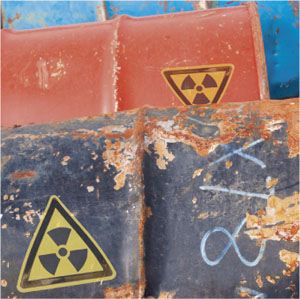 In what is being called one ofthe biggest Environmental insurance coverage rulings to come out ofCalifornia in decades, the state's highest court says policyholderscan seek recoveries up to the policy limits and can stack multiplepolicies on long-tail claims.
In what is being called one ofthe biggest Environmental insurance coverage rulings to come out ofCalifornia in decades, the state's highest court says policyholderscan seek recoveries up to the policy limits and can stack multiplepolicies on long-tail claims.
“This is really a big deal—a blow to the insurance industry,”says Robert M. Horkovich, managing partner with Anderson Kill &Olick, which represented the state in the case. The case involvesthe Stringfellow Acid Pits site—one of the most contaminated sitesin the United States.
|Forty years ago, Stringfellow, a toxic-waste dump, was closedafter it was found to be seeping waste into ground water. The statein the late 1990s was found liable and was ordered to clean up thesite—a project estimated to cost $700 million.
|Horkovich says the state has collected about $150 million ininsurance but was looking to collect $60 million more with afavorable ruling against Continental Insurance Co., ContinentalCasualty Co., Yosemite Insurance Co., Horace Mann Insurance Co.,Employers Insurance of Wassau and Stonebridge Life Insurance Co.,which provided Excess Commercial General Liability policies toCalifornia between 1964 and 1976.
|The ruling also provides about $54 million in defense costs,Horkovich adds.
|Simple addition concludes the total amount to be received frominsurers is far less than the total cost of the cleanup, butHorkovich says the ruling is far-reaching.
|“It fully clarifies how much insurance is available,” he says.Many eyes were on this case, Horkovich notes, because it provides aprecedent for other long-tail insurance cases such as thoseinvolving asbestos and other toxic sites.
|In similar California cases, determining damages has beenconfused by complex calculations with liability insurers todetermine when property damage and bodily injury occurred in orderto assess payment pro-rata—according to what the policy coveredduring a specific time period.
|“It was so difficult to ascertain damages for each year,”Horkovich says. “Now you don't have to.”
|That's because the ruling says insurers must pay for all damagesup to the policy limits even if the damages happened before orafter the policy was in effect. Additionally, an insured can stackpolicies over multiple years.
|“This is certainly far from an insurer-friendly decision,”observes Michael L. Zigelman, a partner with Kaufman, Dolowich,Voluck & Gonzo. “It creates an 'uber-policy,' with the maximumamount of insurance available to the state.”
|However, he says, the state Supreme Court ruled insurers canlimit exposure by including anti-stacking language inpolicies—something the industry has done since the mid-1980s.
Want to continue reading?
Become a Free PropertyCasualty360 Digital Reader
Your access to unlimited PropertyCasualty360 content isn’t changing.
Once you are an ALM digital member, you’ll receive:
- All PropertyCasualty360.com news coverage, best practices, and in-depth analysis.
- Educational webcasts, resources from industry leaders, and informative newsletters.
- Other award-winning websites including BenefitsPRO.com and ThinkAdvisor.com.
Already have an account? Sign In
© 2024 ALM Global, LLC, All Rights Reserved. Request academic re-use from www.copyright.com. All other uses, submit a request to [email protected]. For more information visit Asset & Logo Licensing.








